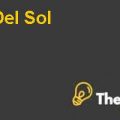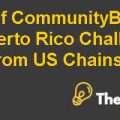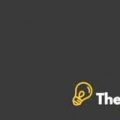
Company Overview
The Moods of Norway were established on 11 November 2002 as a privately held company, which was owned by four investors, including Borresen, CEO Jan Egil Flo, Staalnacke and Dahlkvist. Initially the company was financially supported by the Innovation Norway, which was a Norwegian organization established for the promotion and development of business at home and abroad. All the members were actively participating in the operations of the company and with the passage of time and expansion in their operations, they hired a number of experts from the industry to support their designing and marketing activities. The company’s revenue was increasing dramatically and within a period of just 5 years, it was reached to 4 million USD, whereas in 2008, despite the economic downturn, the company had recorded a sales growth of 110%, which was a significant evidence of its success and growth. While recognizing such an astonishing growth, in 2009, the partners of the company had decided to expand their product portfolio and also make geographical expansion to the outside of Norway.
Problem Statement
The company was facing a number of problems regarding their global expansion while keeping their brand image alive. However, the most important of them was their expansion into the US market, because besides the fact that the US market had a number of profitable opportunities for the company, there were also numerous risk factors that could harm the brand image of the company’s products including “Moods of Happiness”. First of all, unlike the Norwegian market, the US market was comparatively very saturated with the presences of a number of well-known local and multinational brands, which would make it difficult for the company to compete against them. Second, the company’s brand was unknown to the US market and they had no customer base, therefore, they need to depend upon the local distributors and sales channels for the marketing of their products. They were also unaware about the color preferences and the choice of fabric to be used for the US customers. Although, the company had made a five year contract with the Creative Arts Agency (CAA), which was the leading talent agency in the region, but their success was solely dependent upon the performance of the CAA. The second issue that the company was facing was related to the expansion of its product portfolio to make new and innovative designs in the women's brands and also extend their feet to the sportswear industry. Here in this case the company would have to face a number of problems ranging from the lack of expertise in the relevant field to the expected tradeoff of their well-established fashion brand. Whereas, the third problem faced by the company was related to its global expansion, because being a native Norwegian company it had enjoyed a huge success in the native market, but it was really unpredictable that the company would be capable of achieving the same success in the global market. As it didn’t make any sense to predict its global performance on the basis of native output.
In order to deal with these issues, the company should adopt different branding models, which are discussed as under.
The Brand Value Chain (See Appendices)
This model will help the company’s partners to make the valueof their brand before entering into the new market, i.e. The USA market. The model depends upon the following four steps.
- The company should make considerable investments in its marketing program by carrying out extensive research regarding the potential or actual targeted customers.
- It should then conduct a market survey to check whether the customer knows about their brand and products and what they feel about them.
- In this step the company should introduce its products on a trial basis to check the response of the customers towards their products and evaluate the extent of their willingness to pay for that.
- After evaluating the market response and performance of the product, the investors and partners of the company will become capable of making an assessment of the expected value that the product will make for the brand and for the company’s owners (Duggan, 2013).
With the help of this model the company’s partners will be able to understand the needs and demands of the US market and make their decisions accordingly. They will become able to design certain new and innovative products according to the needs and demands of the US citizens and culture, but keeping their native brand alive with all the products. This will also help them to convince the people of USA for accepting the Norwegian culture and designs, which will make the Moods of Norway as a cultural ambassador of Norway to...................
This is just a sample partial case solution. Please place the order on the website to order your own originally done case solution.
Describes a young fashion company compete in a variety of non-traditional ways, many of the "experience economy" related. Mood fronts its brand with "boy band" of the images of the three founders and eccentric designs features to their clothes as a way to get Mindshare clients, even if they can not spend on marketing, as their competitors. Matter invites students to explore the unusual business model and in the concept and execution.
To increase their effectiveness, color cases should be printed in color. "Hide
by Robert D. Austin, Shannon O'Donnell, Dorte Krogh Source: Harvard Business School 20 pages . Publication Date: June 22, 2009. Prod. #: 609106-PDF-ENG












